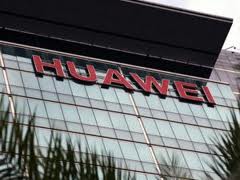  Huawei, a leading Chinese information and communications technology (ICT) solutions provider, las launched the LTEHaul solution at the Mobile World Congress (MWC) 2013.
This SDN-based mobile backhaul solution provides end-to-end support for the planning, construction, maintenance, and optimization of mobile backhaul networks. By adopting the software defined networking (SDN) technology, the solution greatly simplifies the operation and maintenance (O&M) and management of mobile backhaul networks and shortens the time to market (TTM) of new services. The solution helps operators resolve network issues during the evolution to LTE networks.
With the popularization of intelligent terminals and cloud applications, mobile traffic increases by 100% each year. This vast increase leads to a large gap between the user bandwidth requirements and the network bandwidth capability. Operators are therefore eager to deploy LTE networks. However, three large gaps exist in backhaul networks that operators must leap over during the evolution to LTE and LTE-A networks.
First, a large gap exists between massive LTE hotspots and limited hotspot backhaul sites. The LTEHaul solution extends the traditional backhaul network downwards to form a fronthaul, facilitating the management and maintenance of massive hotspot backhaul nodes. A second large gap is present between the vast increase in the LTE bandwidth and the limited bandwidth on the traditional backhaul network. Third, there is a large gap between the traditional backhaul and core networks. The LTEHaul solution stretches the traditional backhaul network upwards to achieve end-to-end fast service provisioning, protection switching, and fault locating from eNodeBs to evolved packet cores (EPCs).
By addressing the large bandwidth and seamless quality service requirements of new LTE/LTE-A-oriented technologies such as eMBMS, COMP, and eICIC, the Huawei LTEHaul solution provides users with site-free and virtual service access. Meanwhile, the fronthaul, backhaul, and core are unified in the network structure, thereby overcoming the bottleneck of traditional GSM/UMTS network structure and bandwidth. By leveraging the SDN technology, the network service bearing and control are separated, and far-end massive cell site gateways (CSGs) and small cell site gateways (SCSGs) can be managed on aggregation site gateways (ASGs).Ts significantly simplifies network management and O&M, saves the operating expense (OPEX) by approximately 60%, and facilitates fast service provisioning.
“As LTE networks are put into large scale commercial use, future mobile backhaul networks must be able to carry more new services and support more application scenarios. This will bring tremendous challenges to the live mobile backhaul networks. Huawei’s LTEHaul solution will not only help operators resolve these challenges but aslo address the present GSM/UMTS bearing demands, allowing mobile backhaul networks to leap over the large gaps and smoothly evolve to LTE/LTE-A networks.” said Wei Feng, Vice president of the Huawei fixed network business unit.
For Latest Updates Visit : http://www.facebook.com/pages/TelecomTiger/429104257149437 |